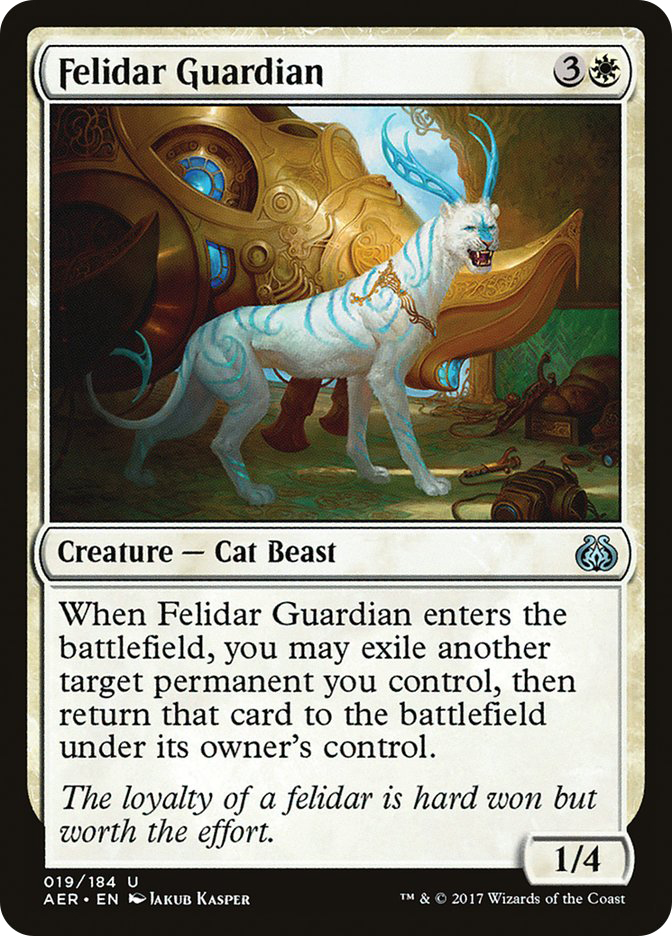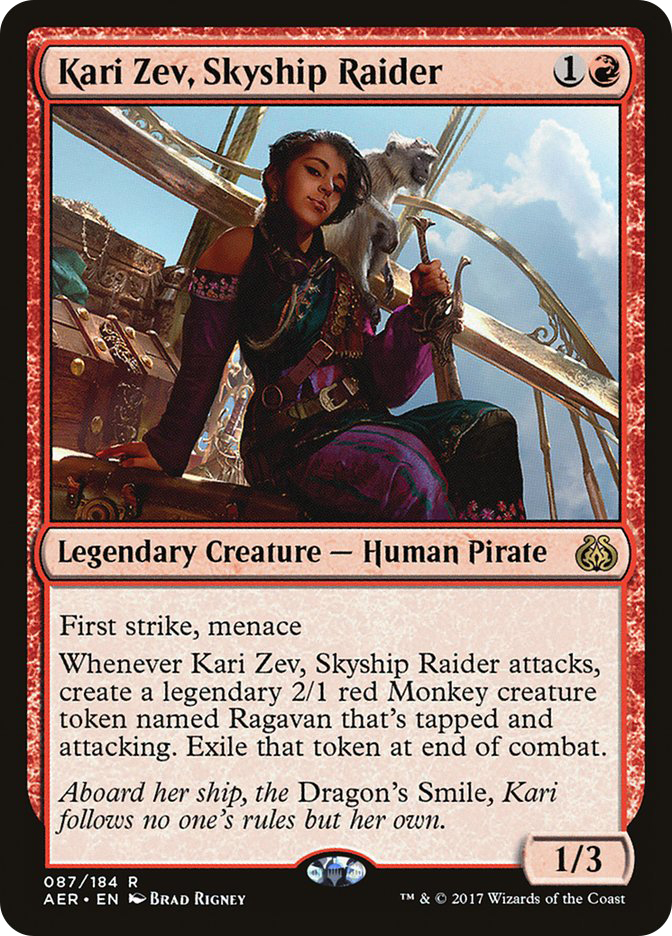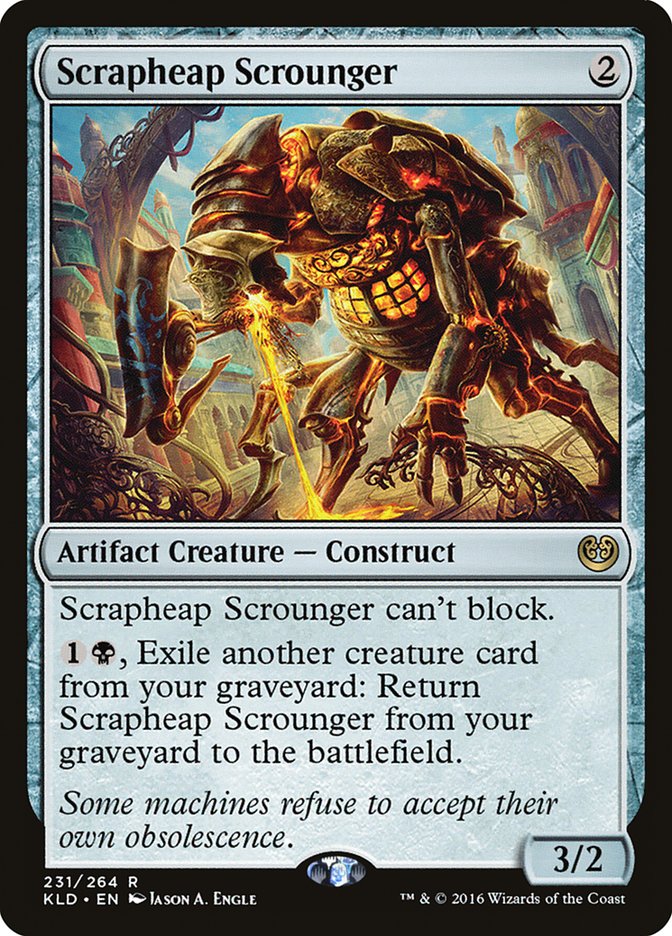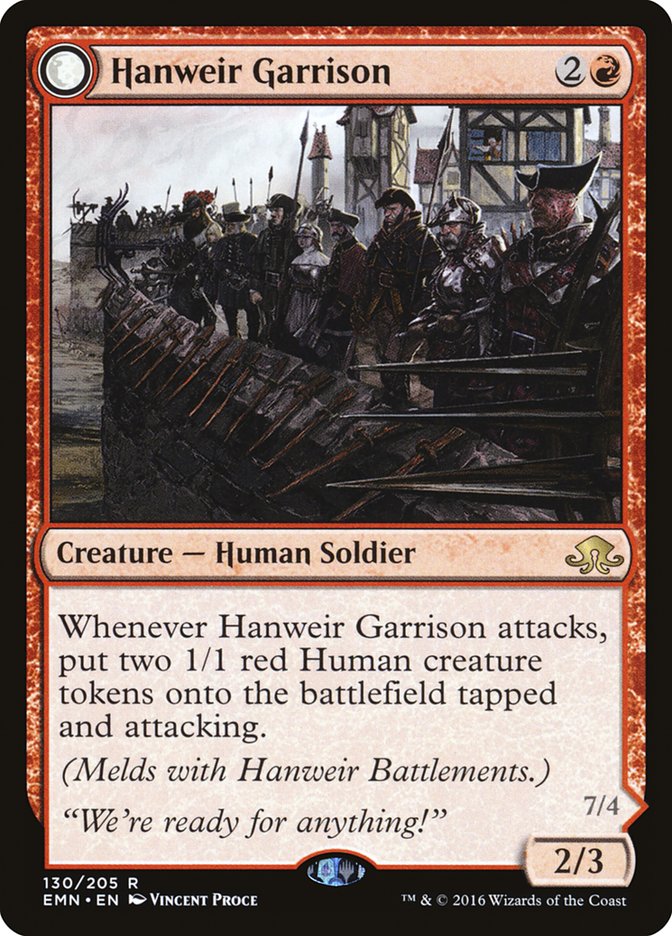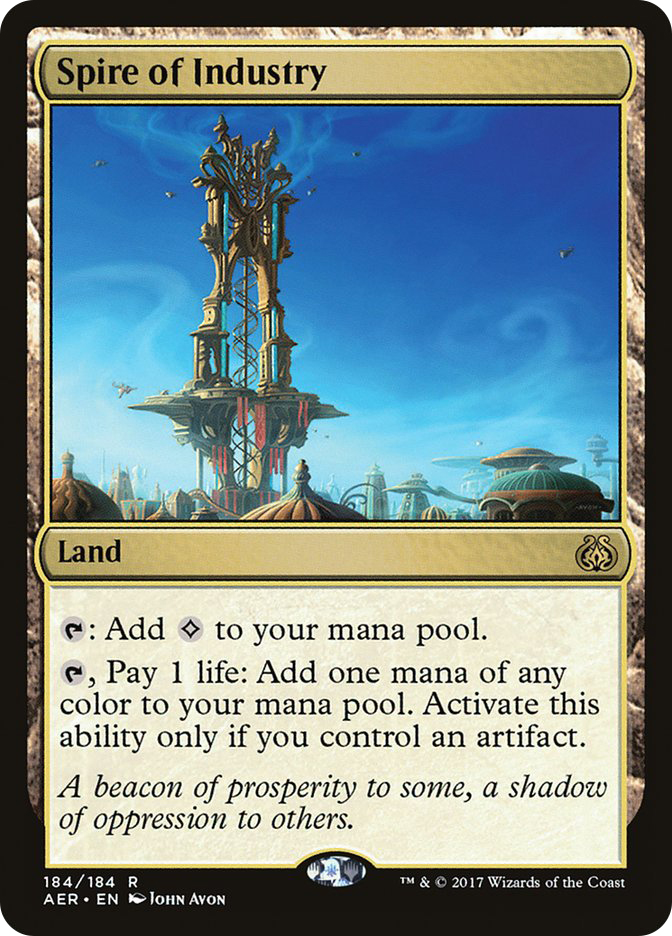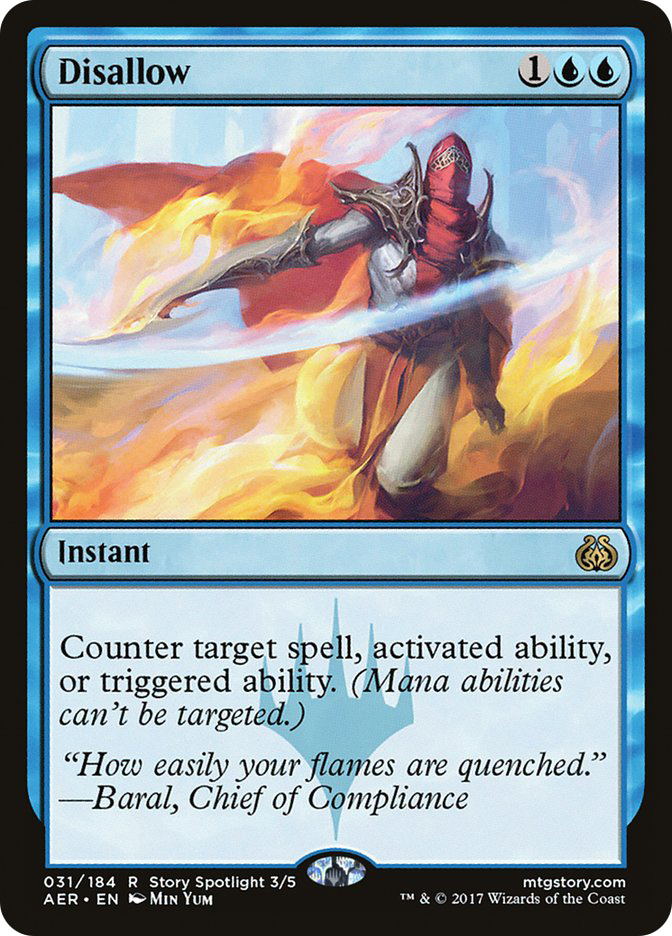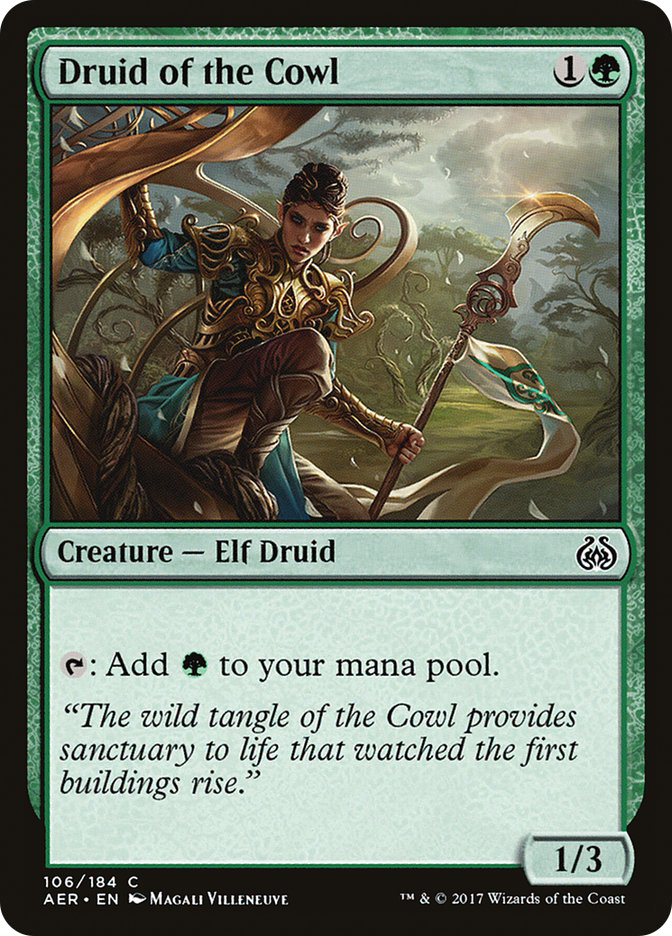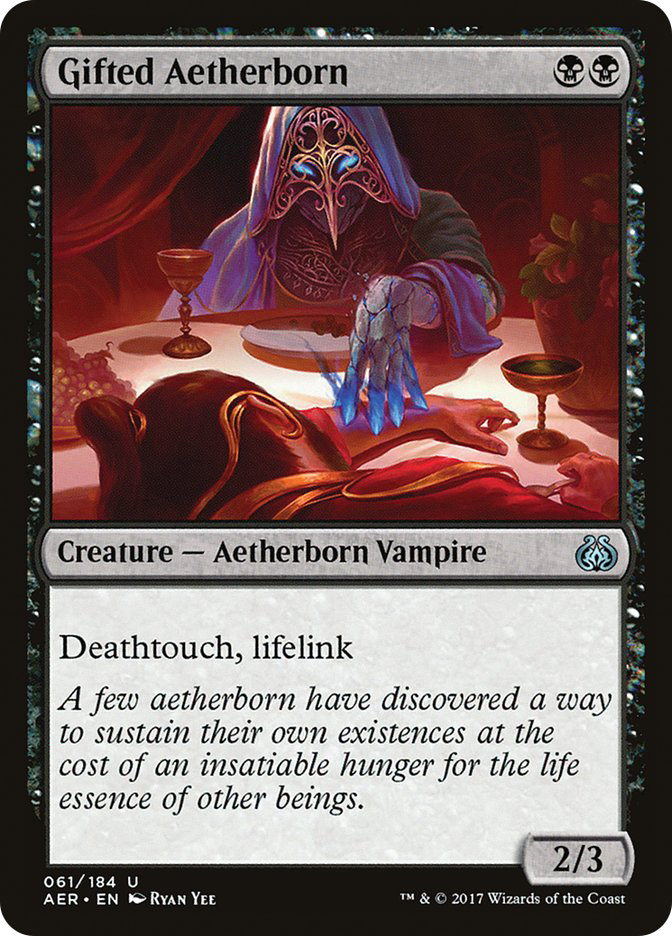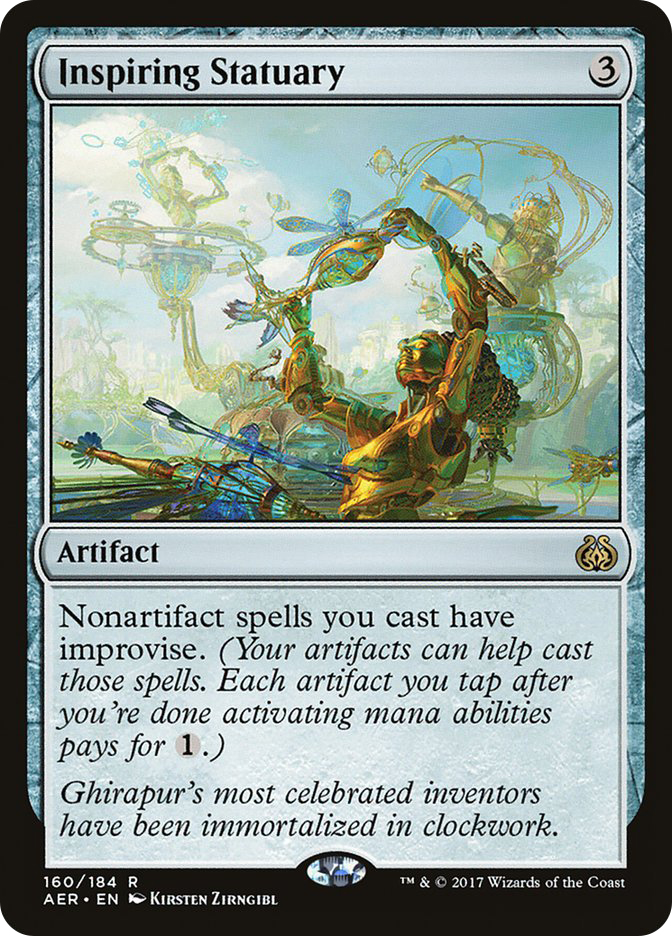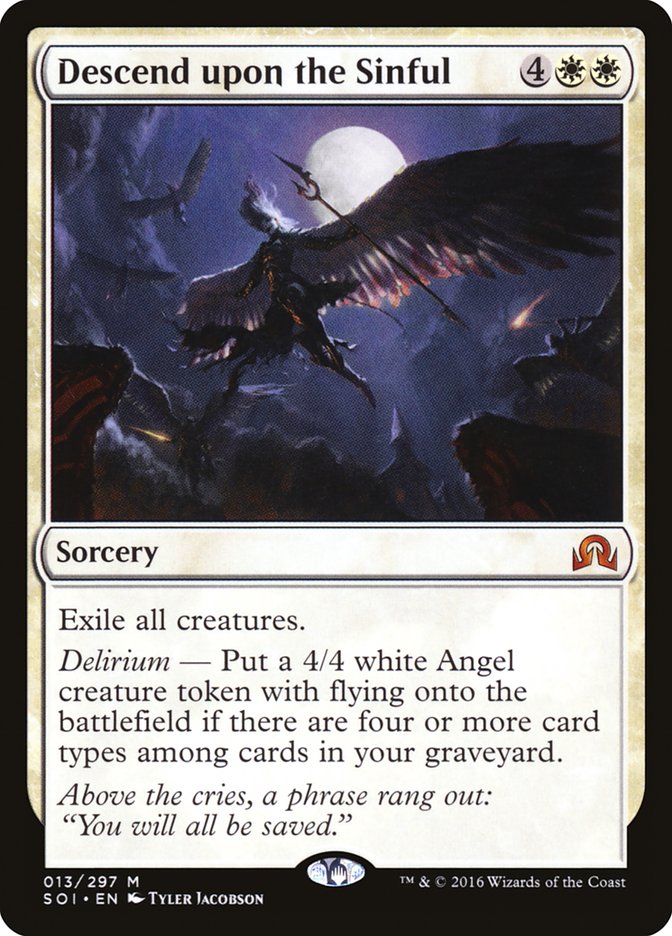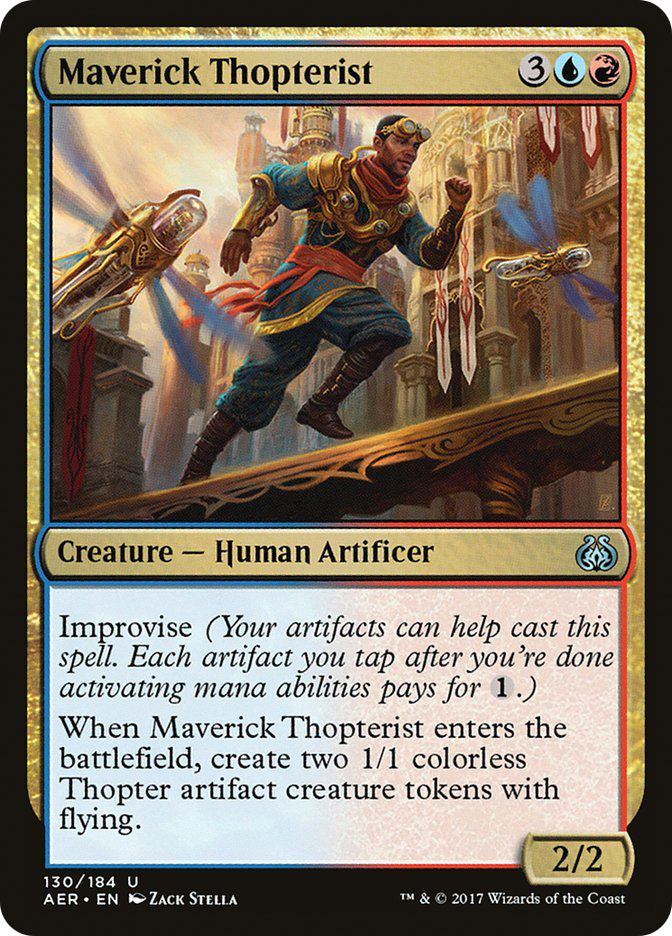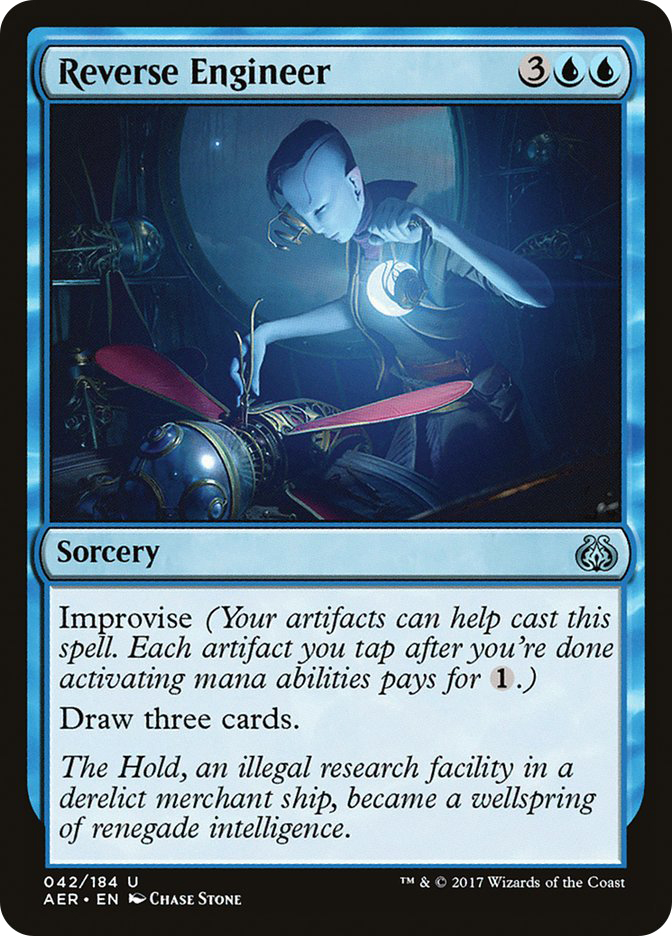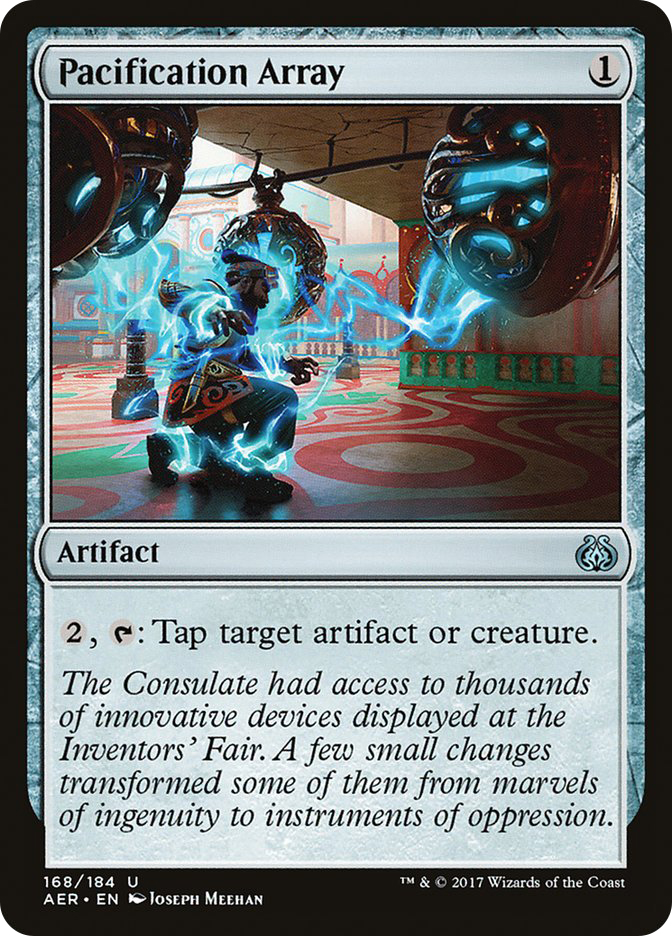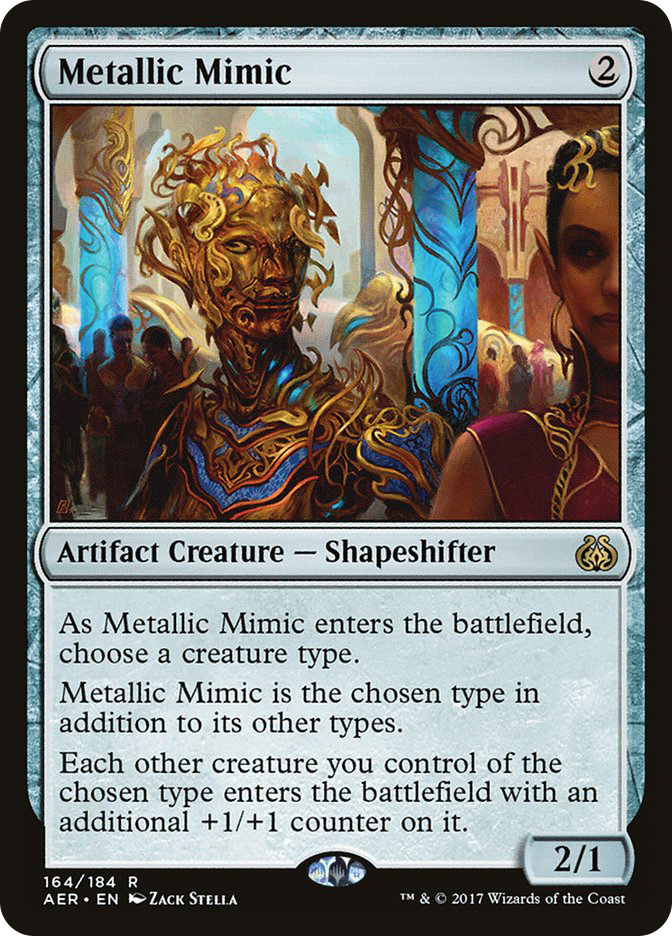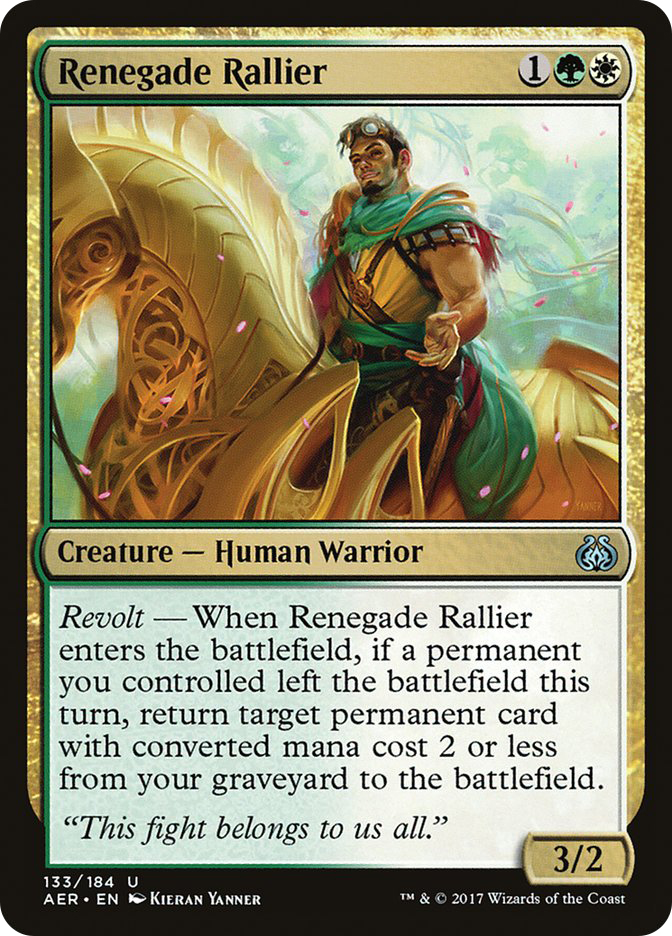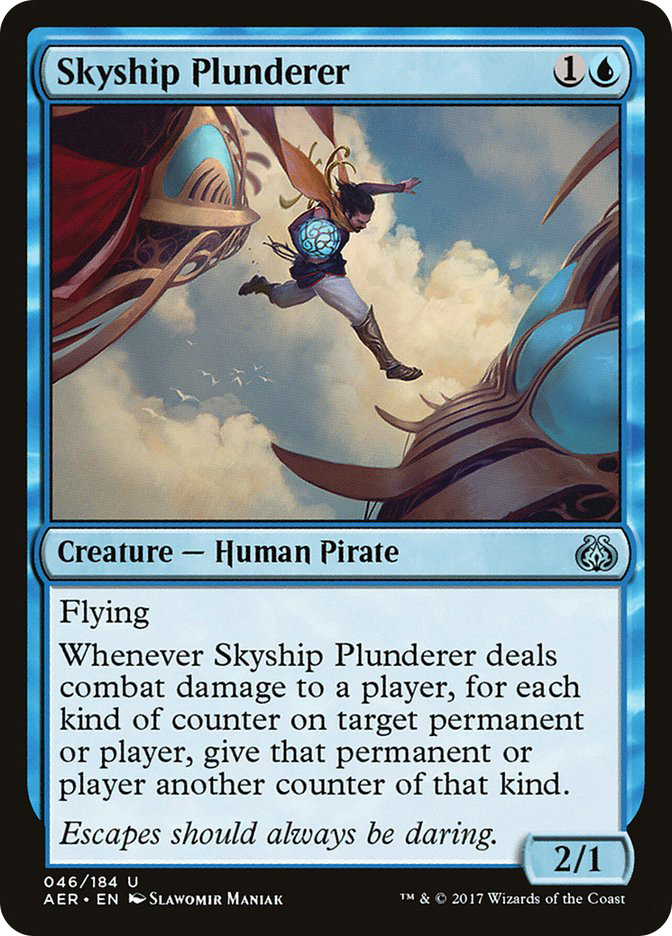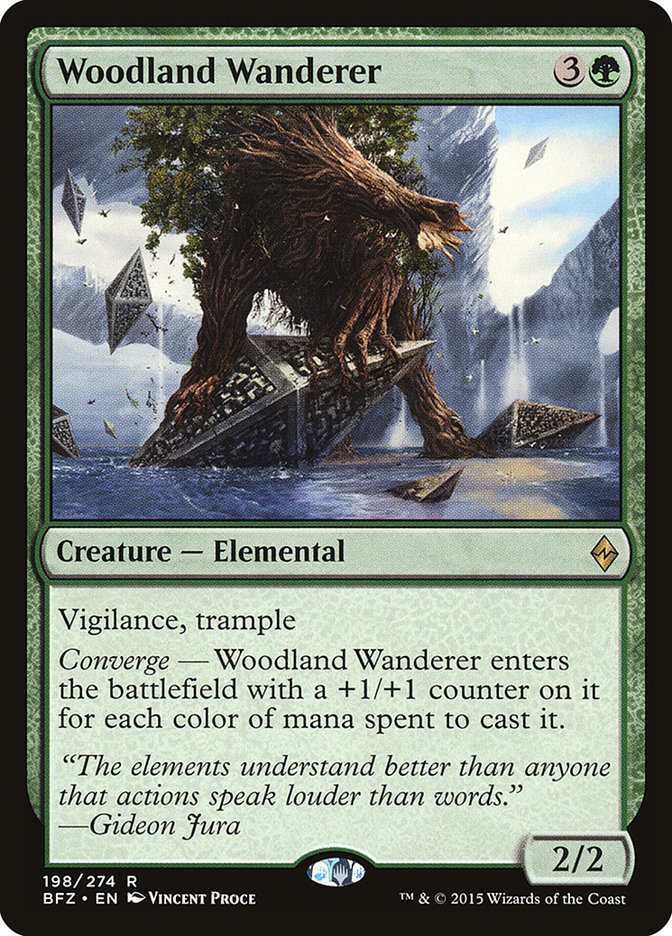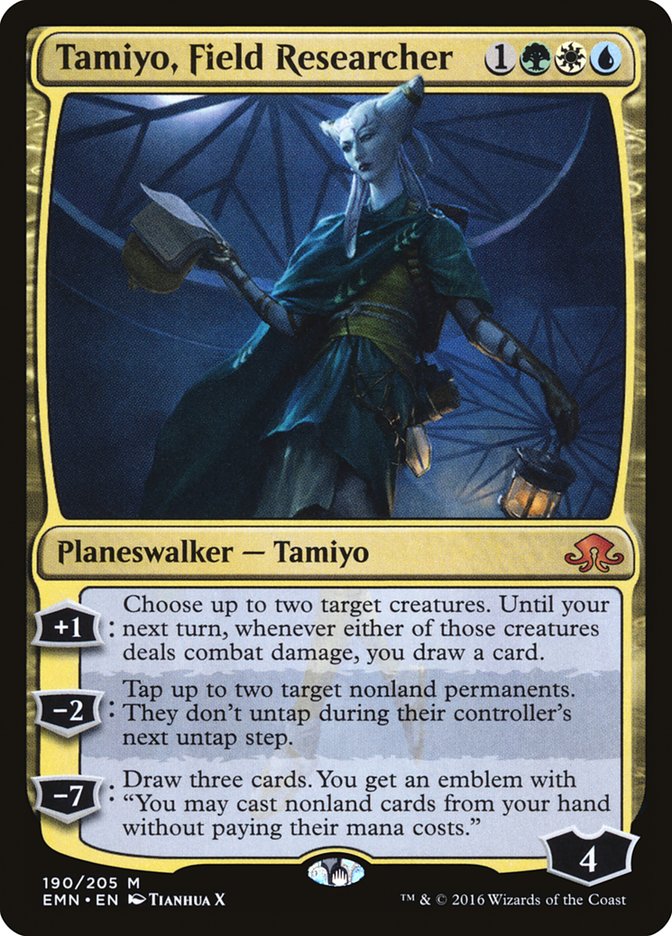This week, on “why Felidar Guardian is going to win you lots of matches…”
Yeah, not interested. The card is good, Splinter Twin combo is dumb, Patrick Chapin wrote a ton of lists showing how versatile it is. Now can we talk about the rest of the set?
There are 193 other cards that do a bunch of cool things, and some of them aren’t really being talked about because they don’t have the raw flash of winning the game on turn 4 or casting spells for free.
Instead of raw potential, which some of these cards might come up a bit short on, I’m going to try to view a lot of these cards in terms of play patterns. How do they appear to work and how have similar things worked in the past?
There’s always a type of card I know is bad but still am excited by. Was “oversized Green 4-5 drop”, now is “red dork too good for 2003”.
— Ari Lax (@armlx) January 6, 2017
Somewhere around Return to Ravnica, there was a big shift in the power of four- and five-cost threats, probably coming to a peak with Siege Rhino. We currently live in a world of Kalitas, Traitor of Ghet and Ishkanah, Grafwidow, threats that immediately brickwall small creatures and close games before burn spells can be reliably topdecked.
If you want to get aggressive, you can’t just Jackal Pup people. You need to go through or around.
We don’t have a Temur Battle Rage or Pyreheart Wolf to go through, but around is doable. Kari Zev, Skyship Raider and Aether Chaser are big players in this tokens style of red deck. Your goal is to establish a battlefield, get some decent tempo in early to get ahead on the battlefield, and then use your overwhelming forces to finish the game. Ideally you have some mass pump spell, and direct damage is not a huge priority.
The shell that immediately comes to mind is the Red-White Tokens list that Makis Matsoukas ended up in the Top 8 of Pro Tour Kaladesh with.
Creatures (19)
Planeswalkers (2)
Lands (22)
Spells (17)

Notes:
- Aether Chaser is a slower artifact for Inventor’s Apprentice and Toolcraft Exemplar than Smuggler’s Copter was, which is why you need to move towards Mardu for Scrapheap Scrounger.
- I want to try Hanweir Garrison over Pia Nalaar now that pumping a Smuggler’s Copter isn’t a thing.
- Declaration in Stone takes a back seat to breaking up the combo reliably with Shock, though Outnumber isn’t bad at that in this deck either.
- Spire of Industry is interesting. It’s an untapped land that acts like Needle Spires on turn 1. It does disrupt triple one-drop hands if they don’t have Thraben Inspector, but that card has to be there to make the other creatures work, so I’m not dissuaded.
- Your three-cost cards aren’t great, so Gideon, Ally of Zendikar beats out Sram’s Expertise on the top-end.
- Make a Stand is way worse due to Yahenni’s Expertise. I’m not sure it survives iteration of this deck.
Typically, countermagic forces you to play with your mana untapped in a specific window. If your opponent can force your hand with the right amount of early pressure or double-threat turns, you can get stuck, unable to use your counter on a key spell, and die.
Disallow fixes some of that and is a card that people are underestimating as a result. It lets you counter later key uses of cards like Aetherworks Marvel activations; Gideon, Ally of Zendikar or Vehicle activations before you establish a Torrential Gearhulk; or a Liliana, the Last Hope ultimate. A lot of the traditional disadvantages of counterspells are mitigated with Disallow, while the removal of Emrakul, the Promised End negates the need to exile spells with Void Shatter.
Expect most decks to default to Disallow in the near future for their three-cost counterspell once people realize the full potential utility of the card.
Like Disallow, Druid of the Cowl isn’t a new effect but it will improve on an existing role-player. Servant of the Conduit is great, but some decks aren’t super into the energy aspect and are concerned with the 2/2 body dying to the now-popular Shock. Druid of the Cowl is also comparable to Sylvan Caryatid, which was an insane roadblock against aggro. Admittedly Scrapheap Scrounger and Toolcraft Exemplar change the equation a bit, but Inventor’s Apprentice isn’t happy. There are decks like Aetherworks Marvel and Electrostatic Pummeler where an “energy Bear” is what they are signing up for, but for decks like Delirium variants looking for a more reliable mana creature with a solid manabase, Druid of the Cowl might be just the card.
The first miss I’m going to mention. In the world of new threats, a card like Gifted Aetherborn isn’t going to be more than a role-player. It has good rate, but your good-rate threats have to close the game the way the best four- and five-drops do or have to put you ahead on value. Gifted Aetherborn does neither.
Patrick Sullivan was certainly afraid of this card, and I understand why. Bulk cost reduction is scary. My position is that this card is more of a trap than everyone realizes.
There is no redundancy in Inspiring Statuary. All of the enablers for Inspiring Statuary do nothing to push you towards your big spells, and the cards that do, like Hedron Archive, don’t help with Statuary. There’s no point in tapping your Corrupted Grafstone to Improvise. How are you surviving when you miss on your Statuary?
The pattern to mimic if you want to push hard on Inspiring Statuary is G/R Aetherworks Marvel, where you go off when you hit your big card but have normal haymakers as backup. The problem I foresee is that, unlike Aetherworks Marvel, you don’t just win once Inspiring Statuary hits the table. Your “go off” is a turn late.
Better luck next time, kid.
Maybe this card should just be viewed as an efficient mana rock and not a true engine. In a G/U Aetherworks Marvel deck, Inspiring Statuary can act as a backup ramp spell that doesn’t die in combat like Chandra, Torch of Defiance. For some reason, I find it way too exciting to tap Aetherworks Marvel to merely help cast Ulamog, the Ceaseless Hunger instead of it doing all the lifting.
Creatures (15)
- 4 Ulamog, the Ceaseless Hunger
- 3 Tireless Tracker
- 2 Ishkanah, Grafwidow
- 4 Servant of the Conduit
- 2 Rogue Refiner
Lands (22)
Spells (23)
- 4 Vessel of Nascency
- 4 Aetherworks Marvel
- 4 Woodweaver's Puzzleknot
- 2 Glassblower's Puzzleknot
- 4 Attune with Aether
- 2 Aether Meltdown
- 3 Inspiring Statuary
Sideboard

Notes:
- I always loved Tireless Tracker in Aetherworks mirrors. Get it in early and then out-card them and sit on countermagic. The synergy with Inspiring Statuary and Clues pushes it to the maindeck, and Negate or Metallic Rebuke might also belong to support this plan.
- Splashing has to be right. I’ve defaulted to red but that isn’t a lock to be right. Black with Fatal Push and activations of Ishkanah, Grafwidow and discard is a real debate. White for Spell Queller and Descend upon the Sinful a la Yuuya Watanabe at Pro Tour Kaladesh is also on the table.
- There are a lot of linear pieces moving around here due to energy and artifacts taking up slots you could spend on raw good cards. Finding the right line, finding overlap, and filling in the last few slots with the right normal Magic cards is a big task in refining this.
- Vessel of Nascency might not be the card you want early with all these other enabler demands, in which case Ishkanah, Grafwidow is off the table.
So we came to the conclusion of Inspiring Statuary working as a big mana rock. Improvise alone is just that: every artifact is a mana rock for your spell.
So you are effectively making a ramp strategy where each artifact is investing in a Rampant Growth. Which of these improvise cards are even worth ramping to? I’m not even sure Herald of Anguish, the big mythic payoff, is on par with true ramp threats like World Breaker that are worth dumping turns and cards of development into. I want my Improvise to be incidental in decks playing good enough artifacts already. The cards that are exciting to me are Maverick Thopterist and Reverse Engineer for different but synergistic reasons.
Maverick Thopterist breaks the basic rule of Improvise and lets you chain off spells. It isn’t high-impact, but it has impact. Reverse Engineer lets you chain off in the other way: you can afford to spend cards to Rampant Growth because the Rampant Growths pay to draw you more cards. The key is going to be finding the right “Rampant Growth” artifacts that actually do things.
Creatures (7)
Planeswalkers (3)
Lands (21)
Spells (29)

Notes:
- Glassblower’s Puzzleknot is solely there to support Aether Hub. If you don’t need the fixing and can instead just run a bunch of basics or Battle lands, you probably want to abandon the energy stuff for Metalspinner’s Puzzleknots.
- I debated Tezzeret’s Touch, but paying to attack with an artifact seems anti-synergistic with all the Improvise cards wanting that artifact as a land. I’m thinking of how Nissa, Worldwaker was used almost exclusively for untapping lands until you were solidly out of threats in the various ramp decks it was featured in. It is in the sideboard solely to bring the business to decks that require you to get aggressive.
This is a hybrid note/card discussion. Pacification Array is just good enough to make the cut with artifact synergies. I don’t think I ever want to draw multiples, hence the three in the list above, but the one thing that list doesn’t do is pair it with sweepers so you can force them to overextend and then lock their followup threat. Part of it is that Grixis doesn’t have hard sweepers and likely leaves them with an Ishkanah, Grafwidow or Verdurous Gearhulk, which makes me wonder about a white-ish list for Fumigate (now a Magic card due to less Smuggler’s Copter!).
Creatures (8)
Planeswalkers (5)
Lands (24)
Spells (23)
Sideboard

Notes:
- Improvise here is just to build Concentrate and Mana Leak. Anything beyond that is just a cute bonus.
- No Aether Hubs due to no Glimmer of Genius and no Harnessed Lightning. Tendo Ice Bridge is not welcome here.
- Tap your creature with Pacification Array. Oh, you cast another? Linvala, the Preserver, get out of here with that nonsense.
Metallic Mimic is one of those cards where I read it and I both know and don’t know what is going to happen. The card has a lot of power behind it as a two-mana “lord,” but it’s so flexible, I have no idea what the end best configuration for it is.
I’ll point you to Tom Ross’s article from January 6th, which has some good starts on the white aggro front, but beyond Humans, there’s more to explore. Eldrazi has been brought up to make a 3/2 and 2/2 with Eldrazi Skyspawner, but that creature type is a little flat and not getting better soon. The type that caught my eye is Servo, specifically due to the overlap combo of Animation Module plus Metallic Mimic letting you pay X plus two mana a turn for X 2/2s.
Creatures (8)
Planeswalkers (8)
Lands (24)
Spells (20)

Notes:
- I want to try a list of this that involves Renegade Rallier, Evolving Wilds, and Retreat to Emeria but can’t justify cutting either Sram’s Expertise or Gideon, Ally of Zendikar.
- I wanted to play Druid of the Cowl, but turn 3 Gideon being easier off Servant of the Conduit isn’t negotiable.
- Too bad all of the green and white Revolt cards are so average, as a bunch of copies of Oath of Nissa and Oath of Ajani make a nice way to trigger the ability when you hit duplicates of your legendary enchantments.
- If I weren’t themed to be Servos, I would maindeck Lambholt Pacifist. There are too many ways to end up with a two-mana 4/4 in this deck.
I mentioned Renegade Rallier above but want to make a point. As implied earlier when talking about how red decks have had to reshape, Magic just isn’t about grinding small value by recovering your two-drop with Renegade Rallier anymore. They will just cast Ishkanah, Grafwidow and you will die. If I am playing this card anywhere, I’m trying to proactively use it to loop a specific permanent I’m sacrificing. The easiest avenue is making a Rampant Growth with Evolving Wilds, and I expect similar lines with Sakura-Tribe Elder and fetchlands in Modern to be a real thing.
Just pointing out that Sam Black wrote an awesome article about this card. Based on my past experience with Atog, Ravenous Intruder is going to need ways to get in quickly and for more than two damage per artifact card if it is going to be good. Pay attention to why Sam is playing Sly Requisitioner and Bone Saw.
Skyship Plunderer is actually the card that inspired this whole article. There’s just something about being able to select anything with this card that feels so interesting and open to possibility.
For such an open card, there is a pretty obvious application of hard-to-get, useful-to-accumulate counters: loyalty counters. Skyship Plunderer lets you quickly ramp up planeswalkers to ultimate or churn activations more quickly than expected.
A sample Bant list brewed up with the help of Eternal format enthusiast Danny Batterman and cribbing from Julian Wildes’s Four-Color Aggro list from the Top 16 of Grand Prix Providence this year:
Creatures (21)
- 3 Tireless Tracker
- 4 Spell Queller
- 2 Verdurous Gearhulk
- 4 Servant of the Conduit
- 1 Druid of the Cowl
- 4 Skyship Plunderer
- 3 Maulfist Revolutionary
Planeswalkers (8)
Lands (21)
Spells (10)

Notes:
- Woodland Wanderer has been abandoned as the four-drop slot fills up with more planeswalkers, but getting the bonus color in this deck would be very easy. Just having access to Harnessed Lightning and Radiant Flames might be worth it.
- I’m short on Maulfist Revolutionary, as it doesn’t do much on-curve. Gnarled Mass was over a decade ago in a different time.
- Selfless Spirit might just belong here because it is such a good card, which in turn implies you want Archangel Avacyn over Verdurous Gearhulk. I just wanted to enable Slith mode on Skyship Plunderer a little more often.
- Tamiyo, Field Researcher is emphasized here because it ultimates the turn after you cast it with Skyship Plunderer attacking. It also has a high-impact, unconditional ultimate, unlike some other planeswalkers with the same two-turn clock, like Nahiri, the Harbinger or Tezzeret the Schemer.
In terms of brew cards, this is just the start. Aether Revolt makes up for its lack of “Gideon, Ally of Zendikar”-power-level cards with depth at the lower levels and it shows in how interesting the set is to build with. Even the simple cards are interesting and offer tons of choices. I’m really looking forward to finding all sorts of new ideas and working with the set for the next two years.
Well, except for one part.


